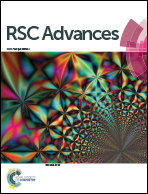Pinning mechanism of advancing sessile droplet on superhydrophobic surfaces†
Abstract
This study explores the working mechanism and the influence factor of the pinning effect of advancing sessile droplets on micropillared superhydrophobic surfaces. Our experimental result reflects that the pinning effect of the advancing droplet is determined by a new parameter, which is named the local triple-phase contact line (LTCL). The pinning force is proved proportionate to the maximal value of the LTCL attainable along the actual droplet boundary. Meanwhile, a theoretical model is built to explain the pinning phenomena on various liquid/solid interfaces.


 Please wait while we load your content...
Please wait while we load your content...